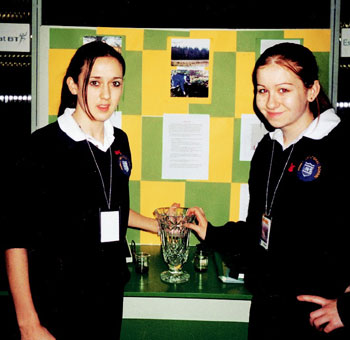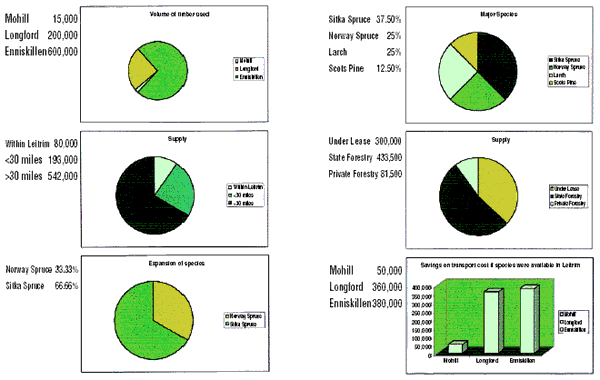| 2004 |

|
YEAR BOOK |
Mohill Vocational School, Mohill, CO. Leitrim
|
Land zoning for forestry and agriculture in Co. Leitrim
|

Our findings are shown in graph form and we would summarise our findings as follows:
-
Leitrim, especially the Northern regions, has
extensive forests at present (15% approx.).
-
The above could be increased to at least 20%.
-
Plantation in future would bring many advantages
such as employment. There is a very high employment
potential on a 25-year rotation.
-
As Ireland has a low percentage of land covered by
forests, it imports most of the timber used (80% approx.).
-
Leitrim has a very high yield class (15-34). The quality of the
timber is superior to Europe � especially pine.

Our fieldwork and investigation for this project were done with the help of County Forester Noel Kennedy, Mr Mc Grath, our Science Teacher, and the staff of Teagasc Mohill and Boyle.
Sharon Keegan & Aine Gildea entered their project in the Intermediate Group Section in the Biological and Ecological Sciences Category at the EsatBT Young Scientist & Technology Exhibition in January 2004. They won a Special Award sponsored by COFORD � The National Council for Forest Research & Development. Their teacher was Mr Michael Mc Grath.
| This article was sponsored by COFORD The National Council for Forest Research & Development |
|---|